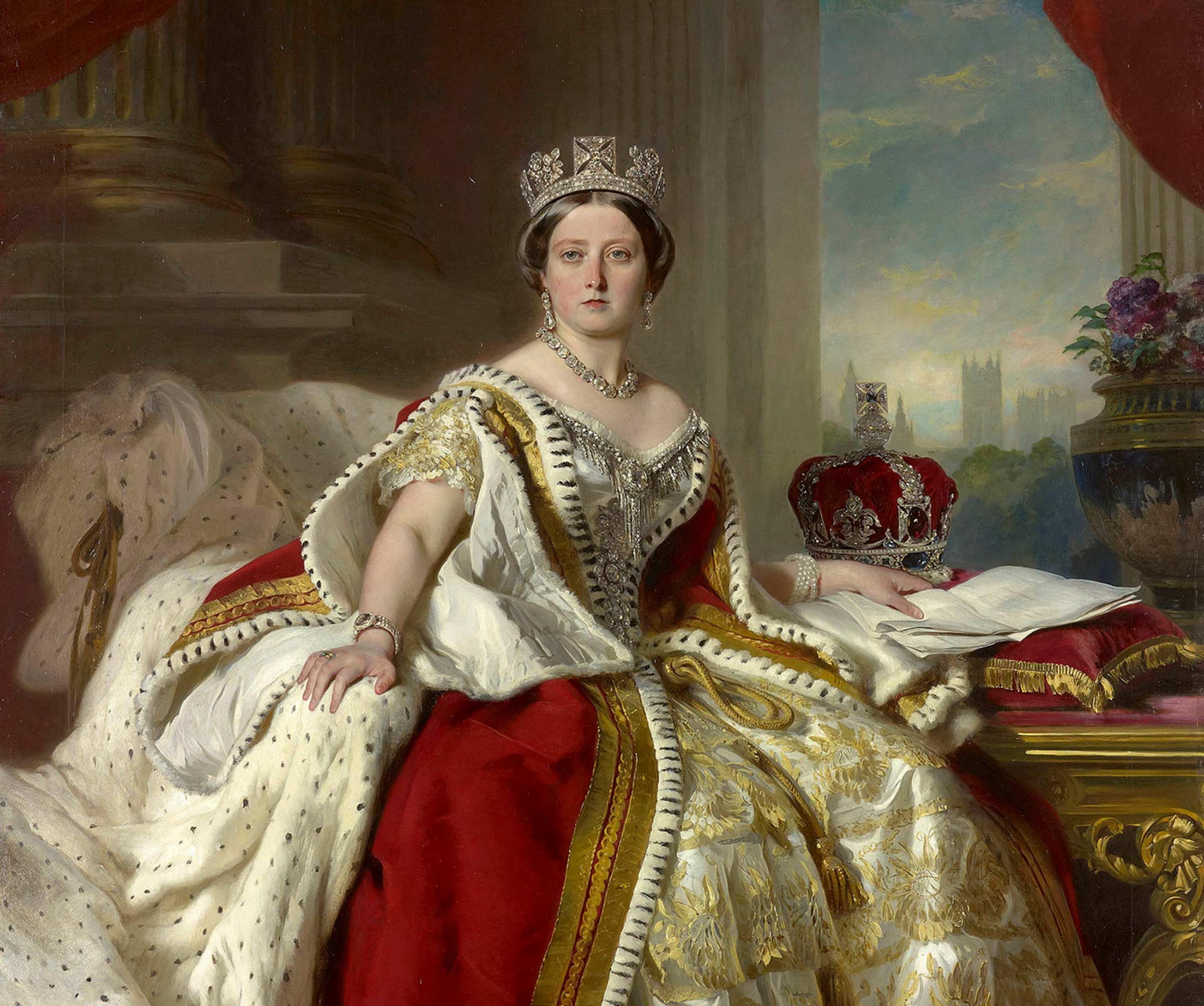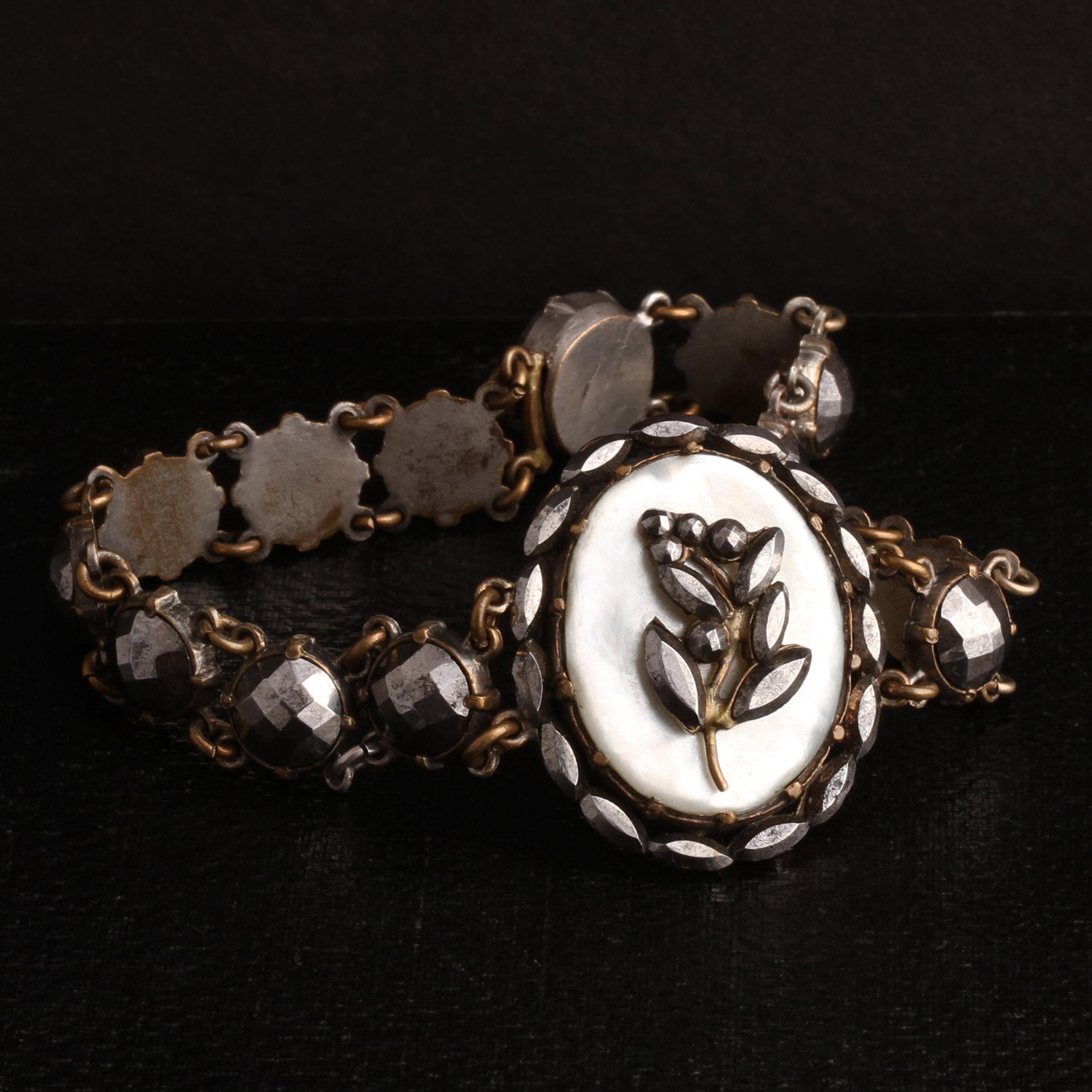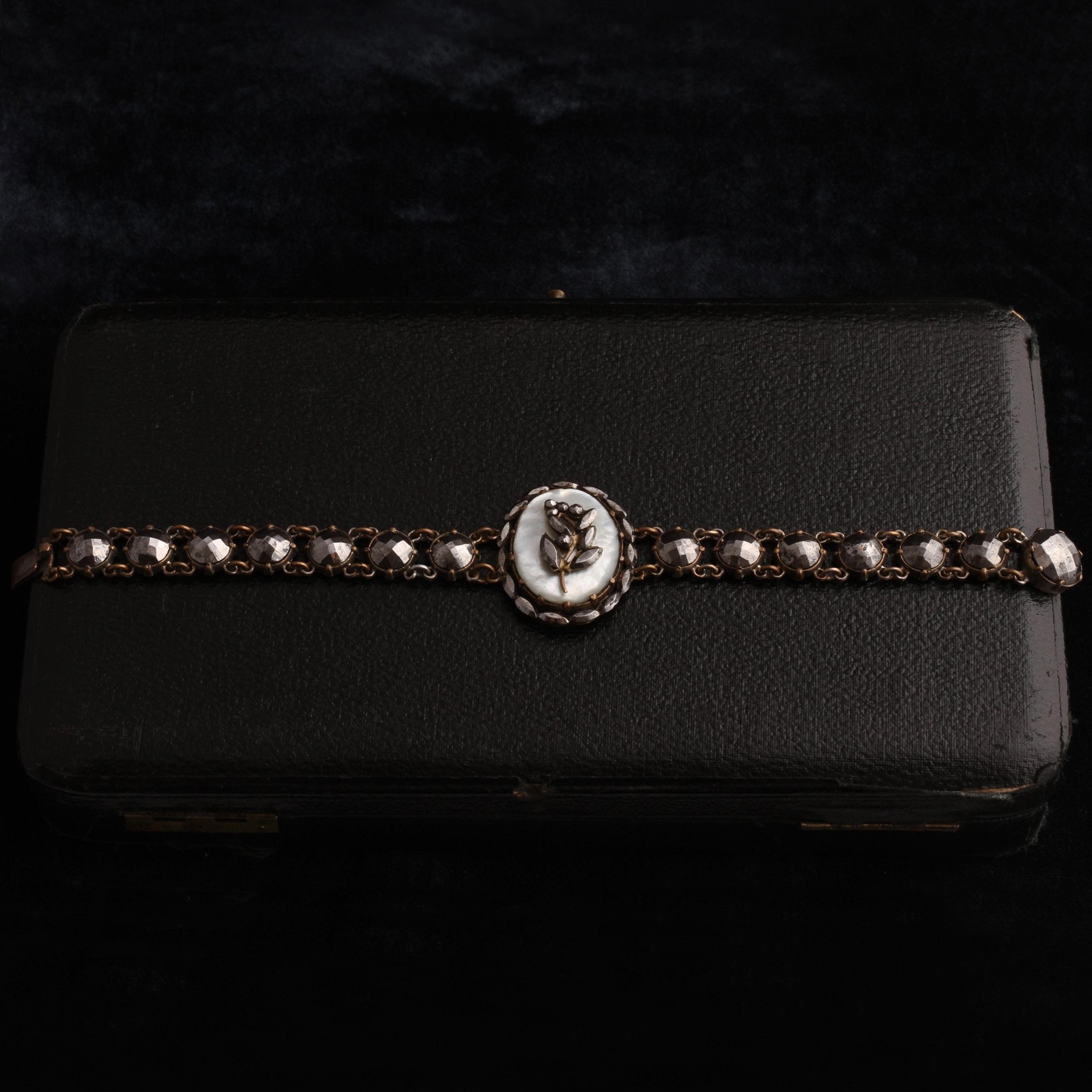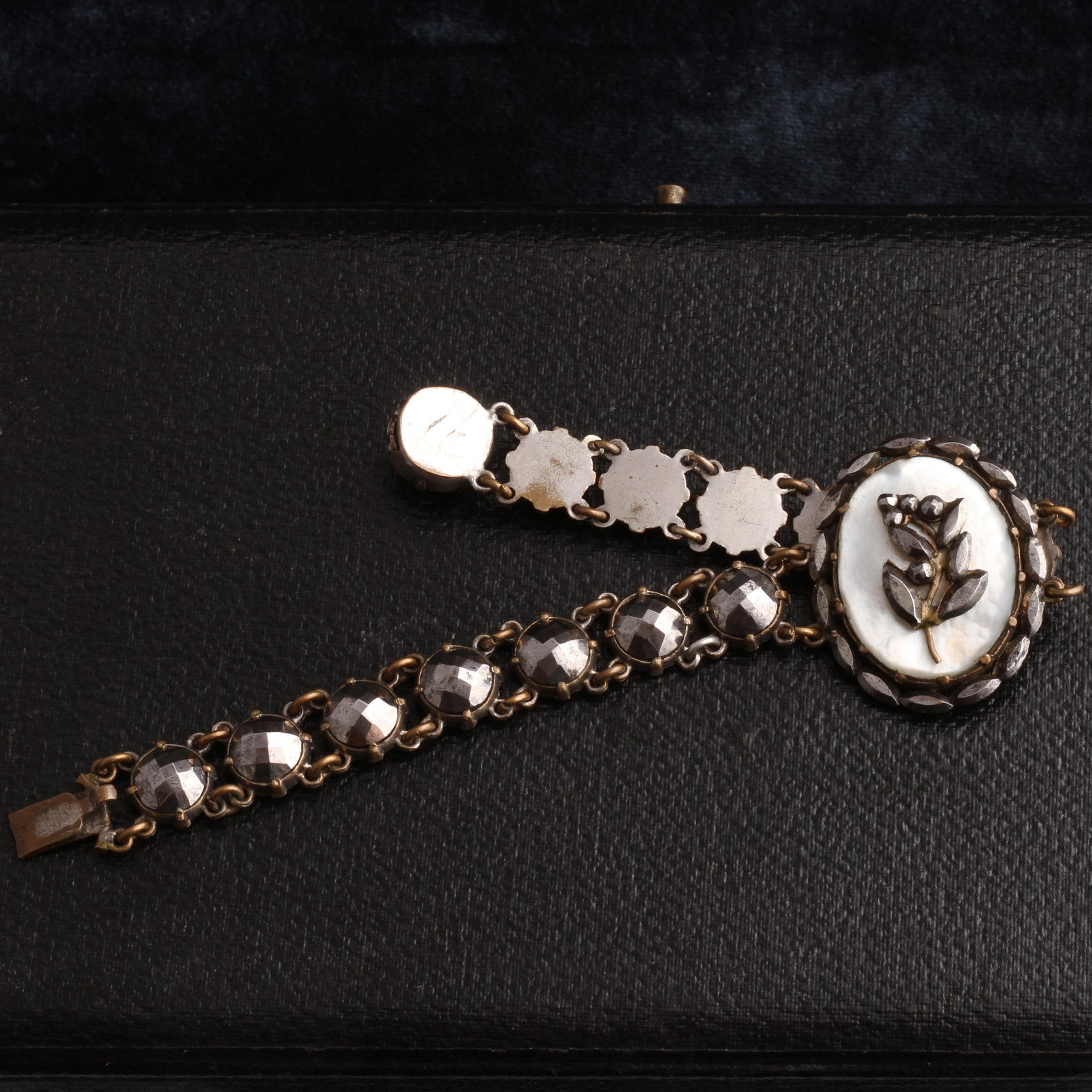The early manufacture of cut-steel jewelry was painstaking work: each individual stud was faceted by hand and then riveted to a base plate made of silver or brass. The brilliant "gems" were intended for evening wear, as their adamantine luster was considered to be the most spectacular under candlelight. These jewels were in great demand for the last half of the eighteenth century and nearly all the way through the nineteenth. This early Victorian piece features a lovely mother of pearl slab affixed with a cut steel rendering of a flower and framed with almond shaped cut steel components. Each link of the bracelet features a large steel "rose cut". Steel is inclined to oxidization, so make sure to remove this bracelet when showering, swimming, etc.
thedetails
- Materials
Cut steel, mother of pearl.
- Age
c. 1840
- Condition
Very good.
- Size
7" length, 1 1/8 x 1" centerpiece.
Need more photos?
Send us an email to request photos of this piece on a model.

Aboutthe
VictorianEra
1837 — 1901
The Victorians were avid consumers and novelty-seekers, especially when it came to fashion, and numerous fads came and went throughout the 19th century. In jewelry, whatever fashion choices Queen V. made reverberated throughout the kingdom. The Romantic period reflected the queen’s legendary love for her husband, Albert.
Jewelry from this period featured joyful designs like flowers, hearts, and birds, all which often had symbolic meaning. The queen’s betrothal ring was made in the shape of a snake, which stood for love, fidelity, and eternity. The exuberant tone shifted after Prince Albert passed away in 1861, marking the beginning of the Grand Period. Black jewelry became de rigeur as the Queen and her subjects entered “mourning,” which at the time represented not just an emotional state, as we conceive of it today, but a specific manner of conduct and dress. She wore the color black for the remainder of her life, and we see lots of black onyx, enamel, jet, and gutta percha in the jewelry from this time. Finally, during the late Victorian period, which transitioned along with a rapidly changing world into the “Aesthetic Movement”, there was a return to organic and whimsical motifs: serpents, crescent moons, animals, and Japonaisserie designed for the more liberated “Gibson Girl”. During the second half of the 19th century, America entered the global jewelry market, with Tiffany and Co. leading the way. Lapidaries continued to perfect their techniques, and the old European cut emerged toward the end of the Victorian period. The discovery of rich diamond mines in South Africa made the colorless stones more accessible than ever before.


